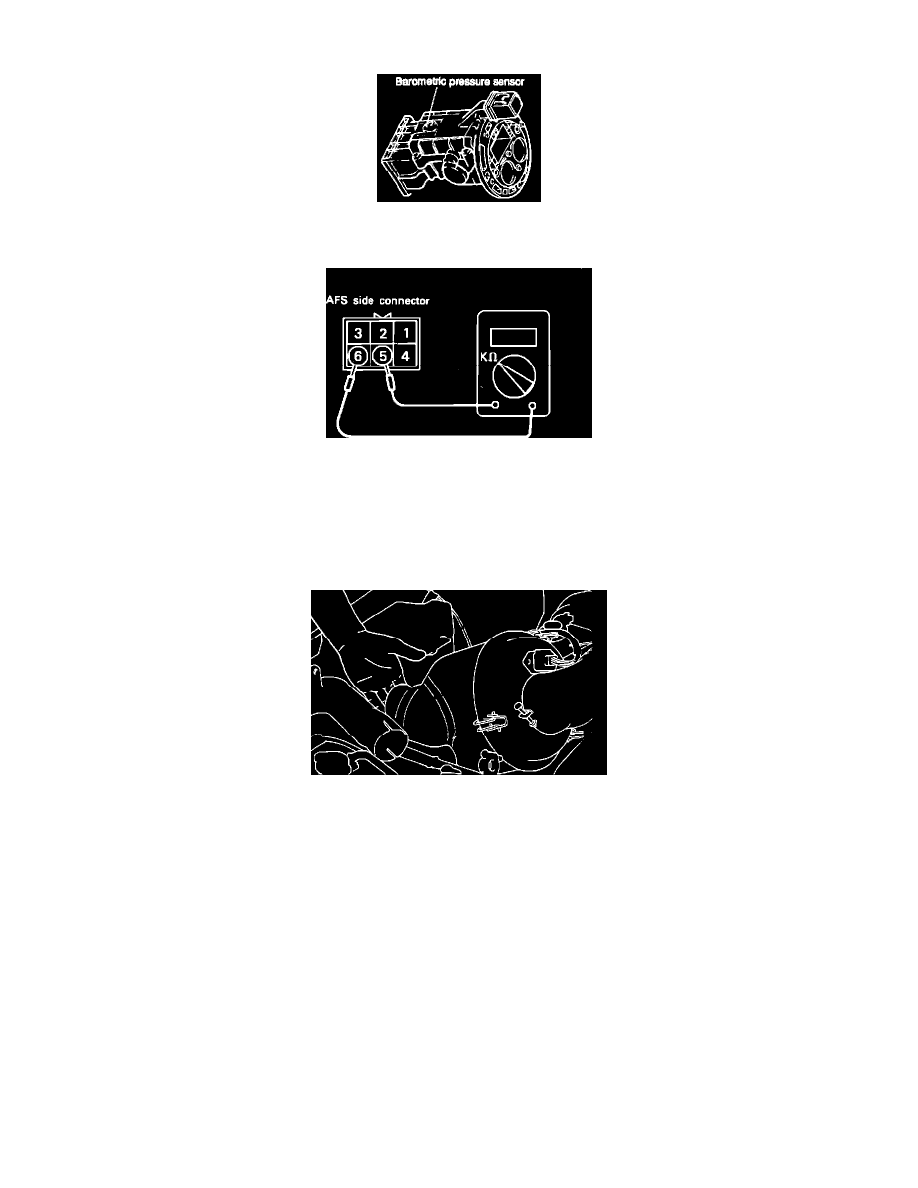Sonata V6-3.0L (1991)

Barometric Pressure Sensor: Testing and Inspection
To test the Barometric Pressure Sensor, located on the air flow sensor, in the air cleaner housing. Remove the air flow sensor (AFS) connector and
proceed as follows.
Barometric Pressure Sensor, Test Hook-up
1.
Connect a voltmeter between terminals 5 and 6 of the AFS Sensor connector.
Terminal 5: Barometric sensor output
Terminal 6: sensor ground
2.
Warm the engine and bring it to a normal idle.
Barometric Pressure Sensor Test
3.
Slowly cover about half of the air cleaner air intake, observing the change in voltage. As pressure falls (vacuum increases), you should observe a
drop in voltage. This should be sufficient to determine if the sensor is functional.
As a reference, with the use of a vacuum gauge, under sea level conditions:
Ambient pressure ...Approx. 4.00v
Vacuum 16in.Hg......Approx. 1.84v
Vacuum 24in.Hg......Approx. 0.79v
4.
Replace the air flow sensor if necessary.
